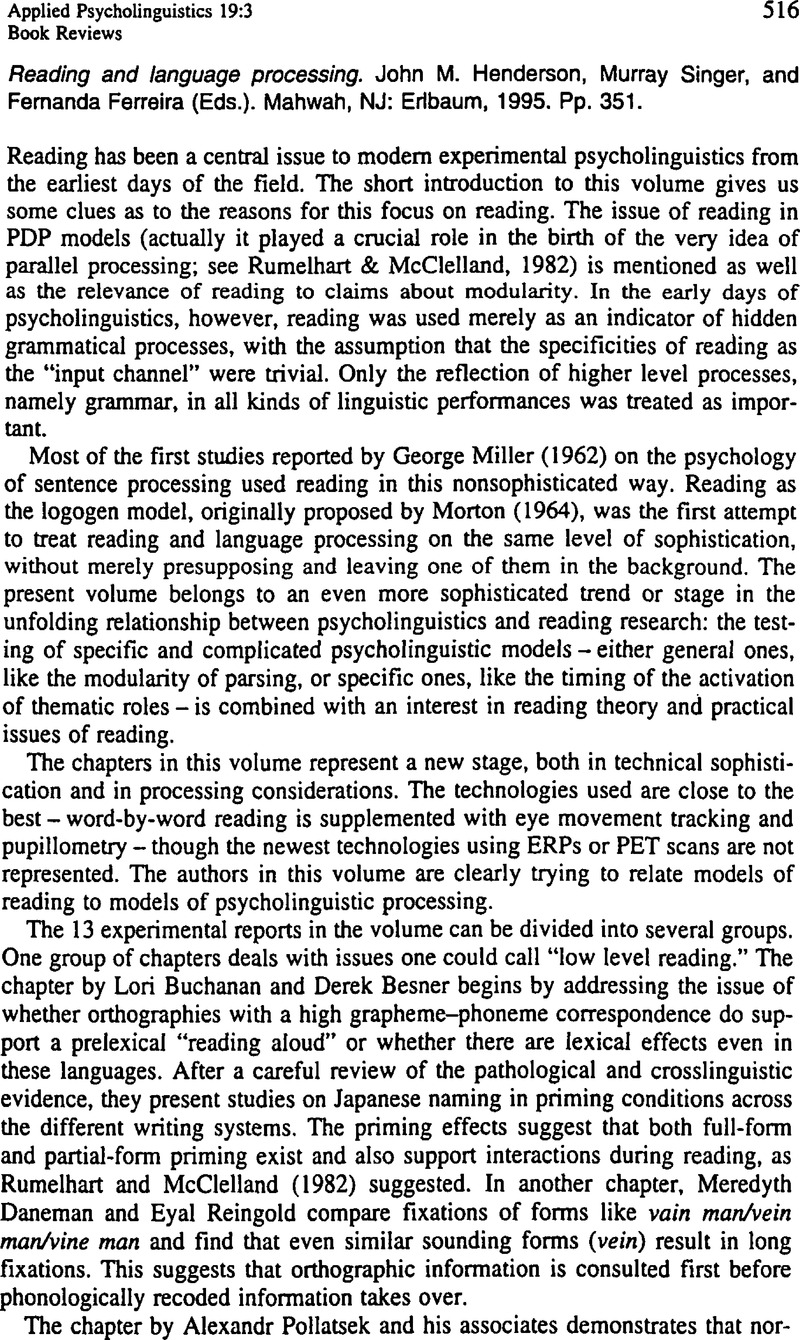No CrossRef data available.
Article contents
Reading and language processing. John M. Henderson, Murray Singer and Fernanda Ferreira (Eds.). Mahwah, NJ: Erlbaum, 1995. PP. 351.
Published online by Cambridge University Press: 28 November 2008
Abstract
An abstract is not available for this content so a preview has been provided. Please use the Get access link above for information on how to access this content.

- Type
- Book Reviews
- Information
- Copyright
- Copyright © Cambridge University Press 1998
References
Carlson, G. N., & Tanenhaus, M. K. (1988). Thematic roles and language comprehension. Syntax and Semantics. 21, 263–288.Google Scholar
Carlson, G. N. & Tanenhaus, M. K. (1989). Linguistic structure in language processing. Dordrecht: Kluwer.CrossRefGoogle Scholar
Graesser, A., & Bower, G. (Eds.). (1990). The psychology of learning and motivation: Vol. 25. Inferences and text comprehension. New York: Academic.Google Scholar
Just, M. A., & Carpenter, P. A. (1992). A capacity theory of comprehension: Individual differences in working memory. Psychological Review, 99, 122–149.CrossRefGoogle ScholarPubMed
Kintsch, W., & van Dijk, T. A. (1978). Toward a model of text comprehension and production. Psychological Review, 85, 363–394.CrossRefGoogle Scholar
Miller, G. A. (1962). Some psychological studies of grammar. American Psychologist, 17, 748–762.CrossRefGoogle Scholar
Morton, J. (1964). A preliminary functional model for language behavior. International Audiology, 3, 216–225.CrossRefGoogle Scholar
Rumelhart, D. E., & McClelland, J. L. (1982). An interactive activation model of context effects in letter perception. Part II. Psychological Review, 89, 60–94.CrossRefGoogle ScholarPubMed




